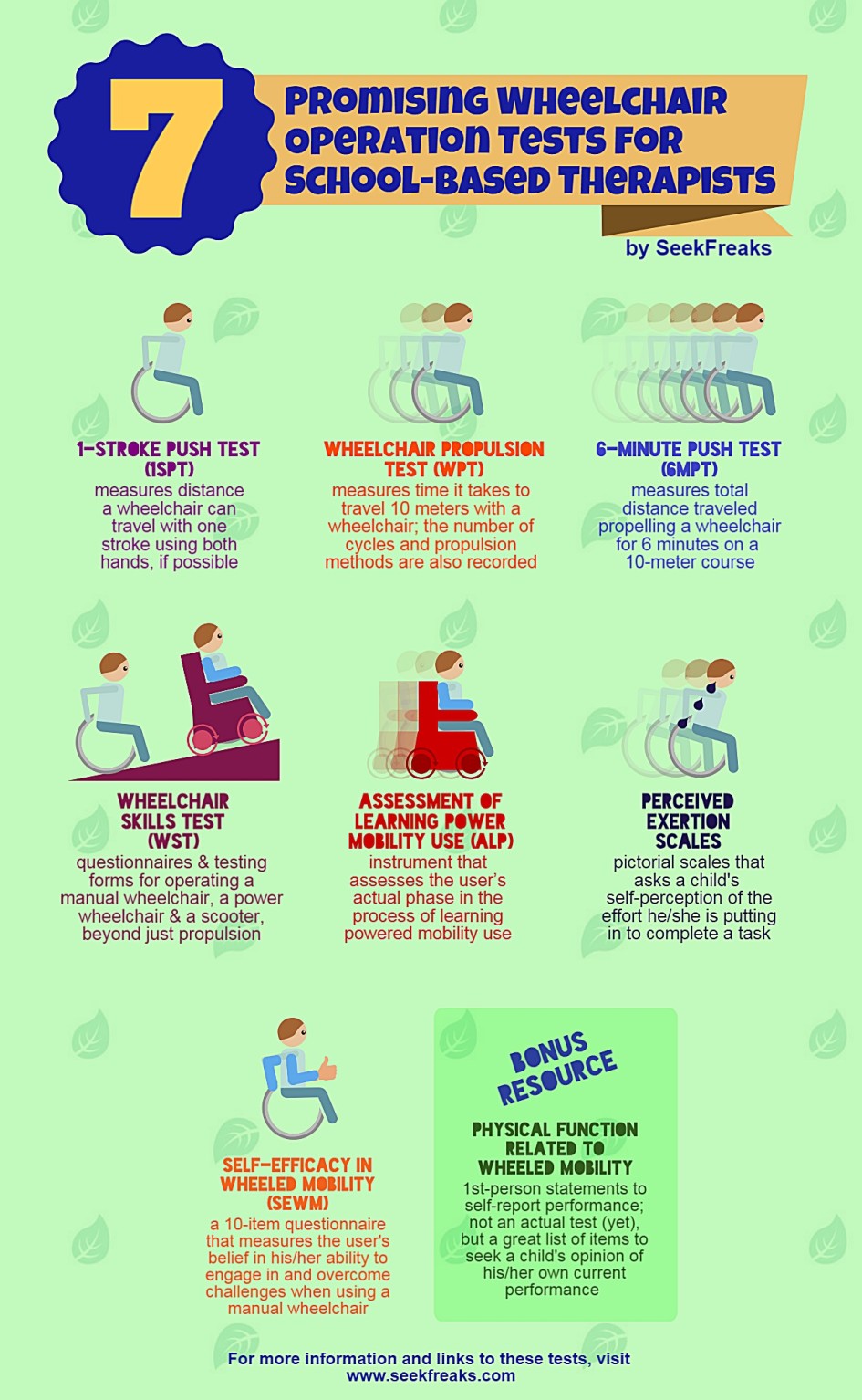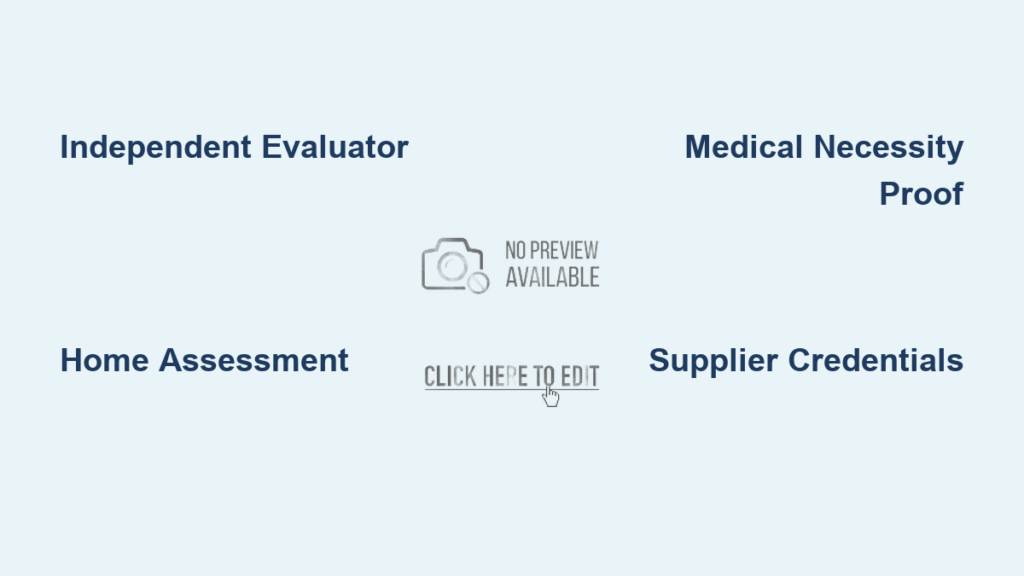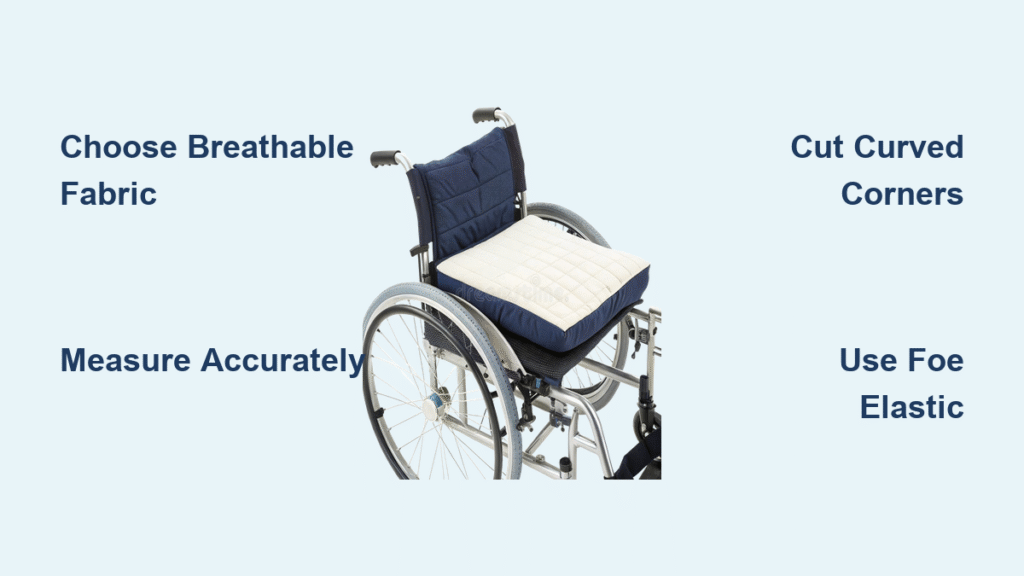Getting Medicare to cover your wheelchair starts with a proper evaluation—not after you’ve already chosen your equipment. Most claims get denied because beneficiaries skip critical evaluation steps or submit incomplete documentation. This guide reveals exactly what Medicare requires for wheelchair approval, including the specific evaluation process, documentation checklist, and common pitfalls that trigger denials. Follow this roadmap to secure your wheelchair coverage on the first try.
Why Your Medicare Wheelchair Claim Gets Denied Before You Order
Medicare only covers wheelchairs that meet strict medical necessity requirements under Local Coverage Determination L33788. Your equipment must qualify as Durable Medical Equipment (DME) and satisfy six specific criteria before approval. The most common reason for denial? Missing or inadequate evaluation documentation that fails to prove your wheelchair is medically necessary for home use. Unlike private insurance, Medicare requires specific evaluations based on wheelchair type—standard manual chairs need basic assessments while ultra-lightweight or tilt-in-space models demand specialty evaluations from independent professionals.
6 Must-Meet Criteria for Medicare Wheelchair Approval
Every successful wheelchair claim must satisfy these six coverage benchmarks. Missing even one criterion triggers automatic denial.
Mobility Limitation That Impacts Daily Living
Your condition must significantly impair your ability to perform mobility-related activities of daily living (MRADLs) like toileting, bathing, or dressing within your home. Medicare defines this as:
– Complete inability to perform these activities
– High risk of injury when attempting them
– Unreasonable time required to complete tasks
Simply being unable to walk isn’t enough—you must prove how your mobility limitation specifically affects home-based activities.
Failed Conservative Treatment Attempts
You must demonstrate unsuccessful trials with canes or walkers before qualifying for a wheelchair. Your physician must document these attempts in your medical records, including duration and specific limitations encountered. Without this documentation, Medicare considers your wheelchair request premature.
Home Accessibility Verification
Your home must accommodate wheelchair use with:
– Doorway widths of at least 32 inches
– Ramp access with ≤1:12 slope ratio
– Adequate maneuvering space between rooms
– Suitable floor surfaces (carpet ≤½ inch pile)
Your vendor’s ATP must conduct an in-home assessment before ordering—guessing measurements leads to denials.
Specialty Evaluations Required for Advanced Wheelchairs

Ultra-Lightweight Wheelchair (K0005) Approval Process
For K0005 coverage, you need both a specialty evaluation and specific supplier qualifications:
- Independent evaluator required: A PT/OT with rehabilitation wheelchair expertise who has no financial relationship with your supplier
- Full-time user requirement: You must use the wheelchair throughout your home daily
- RTS supplier mandate: Equipment must come from a Rehabilitative Technology Supplier with RESNA-certified ATP on staff
Attempting to use a standard wheelchair evaluation for an ultra-lightweight model is the #1 reason these claims get rejected.
Tilt-in-Space Wheelchair (E1161) Documentation Checklist
Medicare requires dual verification for tilt-in-space models:
- Specialty evaluation documenting medical necessity for pressure relief or positioning needs
- Proof your supplier employs a RESNA-certified ATP with direct patient involvement
Claims fail when evaluators don’t specifically link your medical condition (like pressure sores) to the tilt feature’s therapeutic benefits.
Your Step-by-Step Medicare Evaluation Timeline

Week 1: Physician Assessment and Referral
Your primary doctor must:
– Conduct face-to-face examination documenting mobility limitations
– Complete referral to specialized PT/OT if needed for advanced chairs
– Prescribe the specific wheelchair type matching your medical needs
Skip this step and Medicare considers your claim invalid before documentation review even begins.
Weeks 2-3: Specialty and Home Evaluations
For K0005, E1161, or K0008 models:
– Find an independent evaluator (PT/OT with no supplier ties)
– Complete home assessment with vendor ATP measuring:
– Narrowest doorway widths
– Bathroom turning radius (minimum 60″)
– Ramp slope ratios
– Floor surface conditions
Bring photos of problem areas like tight bathroom entrances—these visual aids strengthen your case.
Critical Home Evaluation Checklist to Prevent Denials

Use this verified checklist before ordering any wheelchair:
Entry Points:
– [ ] Ramp slope ≤1:12 ratio (1″ rise per 12″ length)
– [ ] Main entry doorway ≥32″ when measured at narrowest point
– [ ] Threshold heights ≤½ inch
Room Access:
– [ ] Bathroom clearance for 60″ turning circle
– [ ] Bedroom maneuvering space ≥5′ x 5′
– [ ] Kitchen aisle width ≥36″ between counters
Surface Assessment:
– [ ] Carpet pile ≤½ inch (thicker requires power chair)
– [ ] No loose area rugs in primary pathways
– [ ] Non-slip flooring in wet areas
Top 3 Documentation Mistakes That Trigger Denials
Incomplete Standard Written Order (SWO)
Your SWO must specify:
– Exact HCPCS code (K0001, K0005, etc.)
– Required features (e.g., “tilt-in-space mechanism”)
– Medical justification connecting features to your condition
Generic prescriptions like “wheelchair for mobility” get rejected 100% of the time.
Supplier-Tied Evaluators
Medicare denies claims when your PT/OT works for or receives commissions from your wheelchair supplier. Always verify evaluator independence—ask “Do you have any financial relationship with [supplier name]?”
Outdoor-Only Use Documentation
Medicare covers wheelchairs only for home use. Documentation showing primarily outdoor use (“uses wheelchair at mall”) triggers immediate denial. Focus evaluations on how the chair enables home-based MRADLs.
When Medicare Pays for Wheelchair Replacements
Medical Necessity for New Equipment
Medicare covers replacements only when:
– Current chair is irreparable (repair costs >60% of replacement)
– Significant medical change occurs (weight gain/loss >20%, new pressure sores)
– Functional decline prevents safe use of current equipment
Simple wear and tear or preference changes don’t qualify—you must prove medical necessity.
Required Justification Documentation
Your physician must explain why modifications can’t address your changing needs. For example: “Patient gained 75 pounds post-stroke—existing K0003 frame cannot support weight; requires K0007 extra heavy-duty base.”
Working With Medicare-Approved Suppliers
Verify These Critical Credentials
Before selecting a supplier:
– Confirm Medicare DMEPOS supplier number (starts with “S”)
– Check for RTS designation if ordering K0005/E1161/K0008
– Request proof of RESNA-certified ATP on staff
– Confirm they accept Medicare assignment (prevents balance billing)
Suppliers lacking these credentials will submit incomplete claims that get denied.
Insurance Variations You Must Know
Medicare Advantage Plan Differences
Many Advantage plans require:
– Use of specific network suppliers
– Additional prior authorization steps
– Different documentation formats
Contact your plan directly before starting the evaluation process—don’t assume Medicare rules apply.
Medicaid and VA Coordination
- Medicaid: State-specific rules may cover features Medicare denies (like outdoor use)
- VA: Separate evaluation process through VA medical centers—don’t mix documentation
Proven Success Strategies for First-Time Approval
Before starting:
– Confirm your physician participates in Medicare
– Get supplier pre-verification from DME MAC website
– Request itemized cost breakdown including 20% coinsurance
During evaluations:
– Bring caregiver to all appointments (proves assistance availability)
– Document failed cane/walker trials with dates and limitations
– Take home measurement photos showing problem areas
After delivery:
– Test equipment thoroughly in your home within 30 days
– Report fitting issues immediately for adjustments
– Keep all documentation for potential Medicare audits
Medicare wheelchair approval hinges on precise evaluation documentation that proves medical necessity for home use. By following this specific process—especially the required specialty evaluations for advanced chairs—you’ll avoid the 68% denial rate that plagues most applicants. Work with independent evaluators, verify supplier credentials, and document every requirement meticulously. Your mobility independence depends on getting these evaluation steps exactly right the first time.





